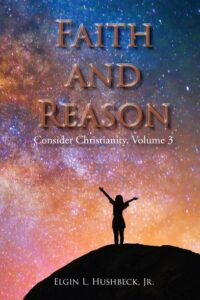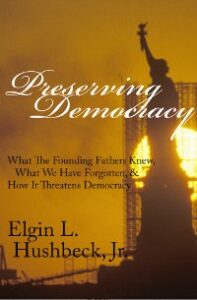Fear vs. Reality
There is no question that the country is in a mess. The first rule of holes states that when you are in one stop digging, but this is a lesson that many on the left, particular the more radical environmentalists, have failed to learn. Granted, radical environmentalists did not get us into this current mess. That was other leftist polices, most notably the forcing of banks, through laws such as the Community Redevelopment Act, regulations from numerous government agencies, and demands from quasi-government organizations such as Fanny Mae and Freddy Mac, to lower loan standards and to give loans to those that in the past would not have qualified.
While radical environmentalists did not cause our current problems, their pedal to the metal approach or increasing regulation is certainly contributing to keeping us in the hole. This can be seen in Mondays (June 13, 2011) Wall Street Journal in three separate editorials. The first, “The EPA’s War on Jobs”, deals with the EPA’s campaign against coal-fired power. As the Journal points out, “according to the EPA’s own numbers, every dollar in direct benefits costs $1,847.” This seems more aimed at shutting down “fossil fuel electric power in the name of climate change.” It has been predicted that this and other EPA actions will force the closure of 60 power plants, costing tens of thousands of jobs, in addition to the higher energy costs resulting from the loss of supply.
Another editorial, “America Needs the Shale Revolution”, mentions the EPA attempt to limit or ban the process of hydraulic fracturing, which, while new to many people, “has been used more than 1 million times in the last 60 years.” If it is successful, it would kill the shale oil drilling boom that is now underway. Shale oil production has grown so rapidly that, despite the Obama Administration’s permitorium in the gulf, domestic oil production is still at its highest level since 2003. The EPA’s action again puts fear over reality, threatens tens of thousands of jobs, and s even higher energy costs.
While jobs are key, the higher energy costs should not just be ignored, or even accepted, for they also affect jobs and our quality of life. As for jobs, lower energy costs translates into lower costs of production. This makes it much easier for companies to grow and thus hire. On the other side of the spectrum lower energy costs translate into not only reduced costs of production, but reduced cost of transportation and reduced cost for the stores; in short everything costs less. Not only that, but with the reduced costs of gas for your car, natural gas to heat your home, and electricity, you have more money to spend on all those cheaper goods. If the EPA gets its way, you can simply reverse all this. Higher costs, less jobs.
The current environmental premium we pay for energy is both huge and mostly unnecessary. With sensible environmental policies we could cut our energy costs in half, if not more, with no noticeable impact on the environment, but a massive impact on our quality of life for the better. “The average household spent more than $5,100 on all energy costs in 2007 (includes home energy bills and gasoline).” How would your life be affected if you had an extra $100 per week?
The third article, “Europe’s Organic Food Scare”, dealt with food instead of energy, and thus might at first seem unrelated. The current outbreak has killed at least 35 people, and predictably has resulted in calls for even more government regulation. How this ties in with the other two editorials is in the fact that this outbreak, and most of the others in recent memory, could have been easily prevented by a safe and simple process that would kill 99.999% of the harmful bacteria. Simply irradiating food, with low levels of radiation kills the bacteria without harming the food. Despite numerous studies showing its safety, and the fact that 10% of the world’s food supply is irradiated with no harmful effects, radical environmentalists have spread so much fear that more widespread use has been effectively blocked.
This is the theme that ties these three articles together, fear of what might be, as opposed to reality of what is. Fear of possible harmful effects of a warming climate, are used to justify the EPA inflicting very real harmful effects today. Fear of possible problems with hydraulic fracturing override the 60 years/one millions use experience that we have, in the drive to shut it down. Fear of what might happen with irradiated food overrides numerous studies to the contrary and 50+ years of actual use.
In each of these cases there is the fear, questionable and often little more than speculation, and then there is reality, experience, and often solid evidence that the fears are groundless. But often it is the fear that wins out, for fear is not only an emotion, but a base emotion that is largely immune to reason and evidence.
But the fear also has its consequences. 35 people in Europe are dead, along with countless others in previous outbreaks. Tens of thousands of people are out of work, and millions of others have a lower quality of life because of the EPA, and the problems mentioned in the editorials above hardly even scratch the surface of the harmful effects of hyper-active government regulation. A big reason we are losing jobs overseas is not because of lower wages in other countries, but higher regulation here.
Still fear will often win out over reason. DDT is another of the fear vs. reality issues, and a particularly nasty one. Decades ago, because of the fear that it might be weakening the shells of birds (turns out it didn’t) and fear of possible harmful effects on people (it has since been shown to be harmless), DDT was banned in many places. We now know that, not only is it harmless for people, it is harmless to most animals, including birds, though a few amphibians have shown a higher rate of birth defects. Opponents of the ban pointed at the time to the evidence that DDT was safe. They pointed to the fact that because of its use diseases like malaria had been virtually wiped out in many places, and warned of the consequences of a ban. 40 years later we can look back and see who was correct. Malaria and other insect borne diseases returned. Diseases like West-Nile Virus have even spread to the United States. In the face of the fear of possible side effects, the reality that continues to be ignored is that over 40 million people have died, most of them children, as a result of the ban and another 1-2 million die each year.
I once had a discussion on DDT, with a liberal friend of mine. We went over all these facts and more. But in the end it did not matter. For her, there was always the fear that DDT, despite all the evidence to the contrary, might have some side effect that we do not know about, and the results of that unknown side effect might be even worse. Fear over reality – that is the problem we face.

